I grew up in New York City in the 50s. My mother was a Utah girl who had dreams of going to the Big City to become an actress, and by dint of sheer determination she did just that; but while her roots were in the West, she did her best to make sure her offspring (me) was given as much cosmopolitan exposure as possible. This included regular visits to the Museum of Natural History and the Hayden Planetarium.
I have posted a couple of the images below before, but I thought I’d get a few thoughts about this wonderful place of education down in one place. Other images have been gathered from various places around the internet; I have tried to give appropriate attribution where available.
The centerpiece of the Planetarium was the Zeiss projector.
Publicity shot for “Pepper Young’s Wife”, TV-Radio Mirror, March 1957, showing the Zeiss Mark II projector in use at the planetarium from 1935 to 1960.
Sitting in the auditorium, watching that behemoth rise up out of the floor, and seeing the stars and planets and nebulæ and galaxies swirling around the ceiling long before Heinlein had written Have Space Suit, Will Travel fired my imagination and gave me a longing to know about what was out there. I remember one show where they gave the audience a little controller and asked them to try aligning two objects in freefall, much the same as a space docking maneuver… it was a great lesson in the nature of inertia.
The control booth of the Star Theatre. I loved that flashlight the operator had which would project a little arrow on the dome – a precursor to today’s laser pointers.
Around the planetarium, as with the modern version and others like it around the country, were scattered various exhibits that I would stare at for hours.
Here I am mugging for the photographer (“Look excited! Look excited!”), but it wasn’t much of an acting job. I loved looking at that rocket. A color postcard of the same scene is below:
Photo of a planetarium postcard by Andy Porter. Caption reads, “THE VIKING ROCKET. This authentic 45 foot precision instrument is an actual rocket composed in part of sections recovered from the wreckage of Vikings built by the Martin Company of Baltimore and used by the Navy to probe the upper atmosphere. A rocket like this reached an altitude of 158 miles in May 1954.”
Photo above and text from the archives of the Museum of Natural History: In 1955, the “most notable event of the year” at the Hayden Planetarium was the opening of the Viking Rocket exhibition. “One of the pioneer exploratory vehicles of the Space Age,” according to a 1961 Museum publication, the rocket was one of 12 that launched from 1945 to 1955, allowing new research on Earth’s upper atmosphere to be conducted.
The next exhibit that comes to mind was the orrery in the Copernican room; the original theatre was outfitted with folding chairs.
From a postcard. The description on the back reads: “Copernican Room showing solar system. Animated model of the solar system showing the sun in the center, and six of the nine known planets revolving around it. The planets also rotate on their axes as the real planets rotate, moving always at the correct relative speeds. Circling the Earth is a smaller globe, the moon, while Mars has two moons. Jupiter is shown with four of its eleven moons, and Saturn with five of its nine. Around the walls are shown the twelve zodiacal constellations and in the center of the floor a reproduction of the Aztec Calendar Stone.”
This model, while not to scale and not terribly dynamic, was intriguing in that it represented the orbits of the planets in real time. That meant slowly. The planets would change imperceptibly, with the inner rocky planets changing somewhat between visits, and the outer planets moving hardly at all. The sun glowed a deep orange.
Closeup of Saturn with five of its then-known nine moons, 10/10/1935. From the Collections of the Museum of the City of New York.
It is of interest to note that we have since identified 79 moons of Jupiter, and 62 around Saturn. [As of July 17, 2018]
American Museum of Natural History Library http://images.library.amnh.org/, image #327132 March 1960. Later, the room was transformed into a more formal auditorium.
The Aztec Calendar Stone
In another room was a place where you could weigh yourself on a series of scales which would show your weight on the Moon, Venus, Mars, Jupiter, and Saturn. Each scale glowed a different color, and to the eyes of a five-year-old, these were some of the most wondrous things in existence. Cards were provided with which to record your individual results.
Image from Popular Science, August 1952. Explanation from the Hayden Planetarium at their Facebook page:
“Another innovation, which has proved of great popular interest, was an exhibit illustrating the principles of the force of gravity by means of six specially calibrated scales showing the actual weight of the visitor on different planets. In this undertaking the Planetarium enjoyed the cooperation of the Toledo Scales Company.”
– American Museum of Natural History Annual Report July 1950-June 1951John Pazmino of NYSkies Astronomy pointed out that the effect of different weights was done just at the level of the display, not internally. In other words, the needle went to the same angle on each scale, and only the numbers in the background varied.
The exhibit was later updated and modernized:
American Museum of Natural History Library http://images.library.amnh.org/ image #334305 September 1969
Like any good museum, there were souvenirs to be had.
From the collection of Tom Lesser. I would swear on a stack of waffles that I had one of these; Heaven only knows what happened to it. I was too young at the time to appreciate much astronomy, but nowadays there are some wonderful planetarium and space-exploration programs available online and offline both.
I know I had one of these keychain perpetual calendars, and loved it:
Again, sadly, lost in the mists of time.
The Willamette Meteorite was on display as well:
That is one huge hunk of extraterrestrial iron.
Many, many more photos can be seen at the Original Hayden Planetarium’s Facebook page. The ones I have gathered here represent my clearest memories, but the original planetarium had much more to offer. It was a place of wonder and delight. On my next trip to New York, I must be sure to visit the modern incarnation and see what has happened in the last 60 years or so.
Edit: The visit was accomplished, and the report is here.
The Old Wolf has spoken.
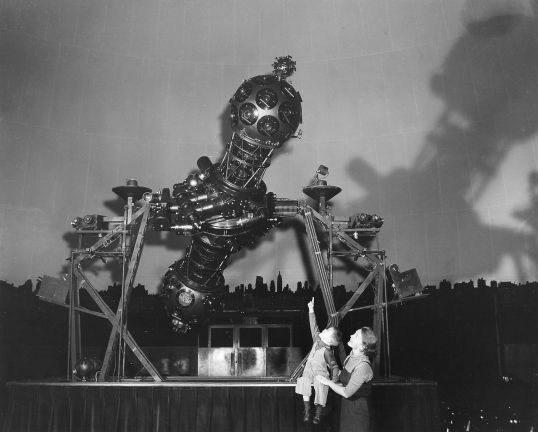
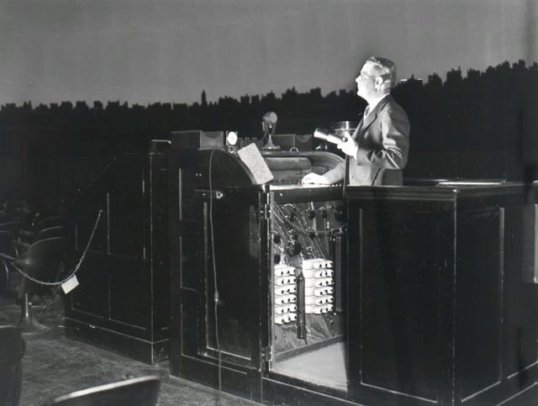
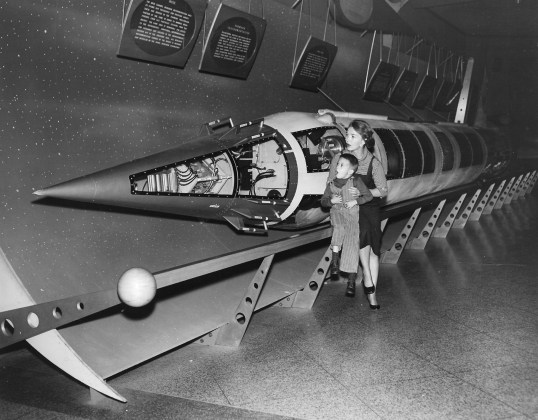
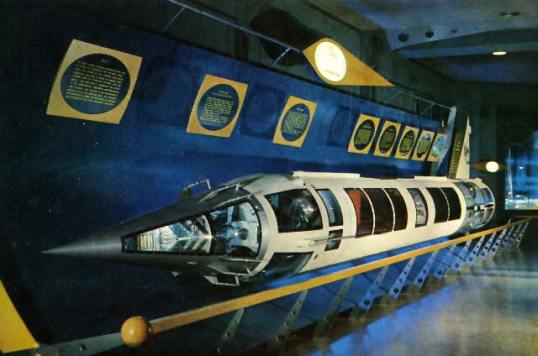

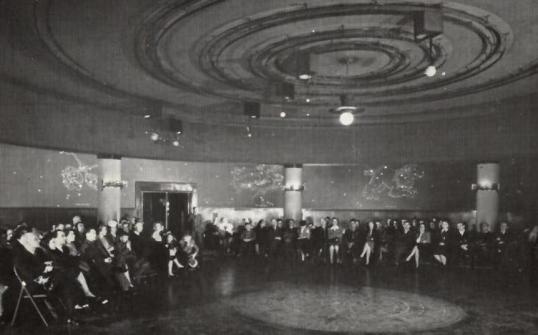

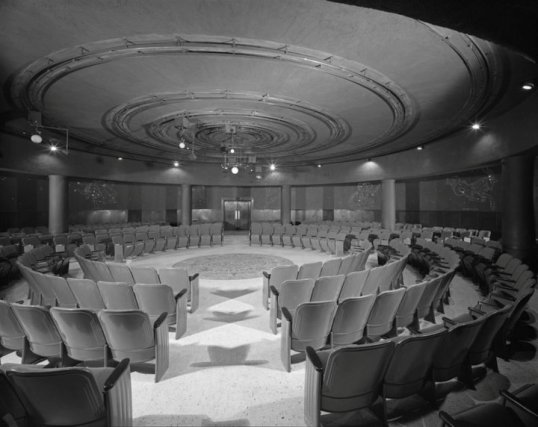
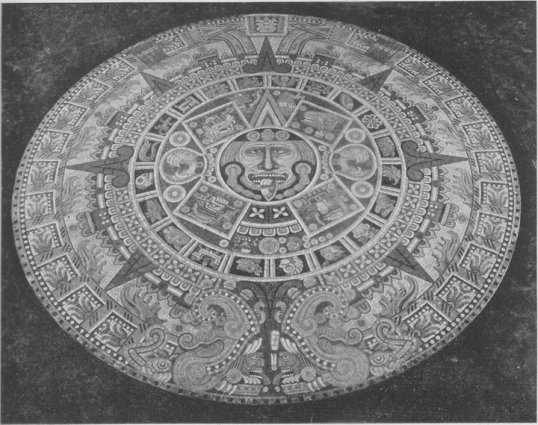

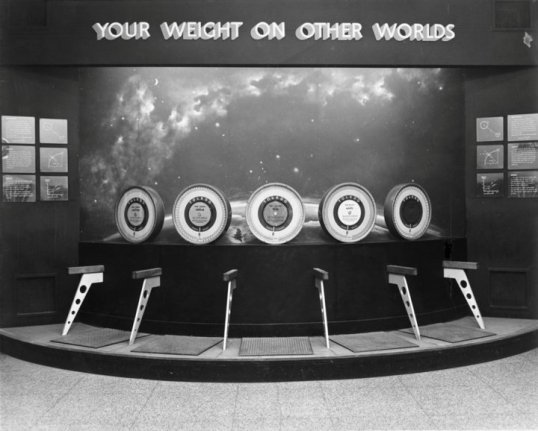


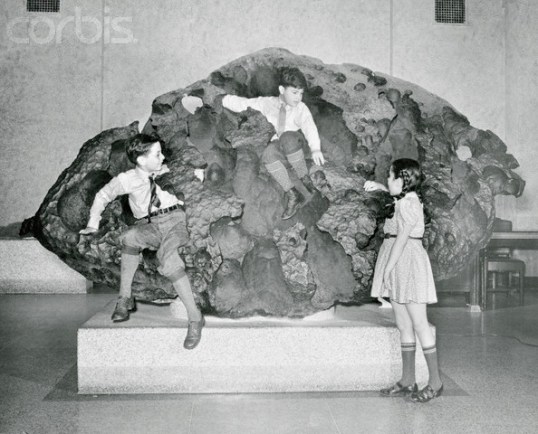
Pingback: A visit to the new planetarium, and so much more. | Playing in the World Game
This posting brings back some wonderful childhood memories. I was fortunate to visit the Hayden Planetarium more than once as part of grade school outings. Among other sparks the Hayden ignited my interest in amateur astronomy. One vivid memory is of a Questar Maksutov with an accompanying picture of the ring nebula in Lyra. Taking such a picture seemed like a distant possibility. But thanks to advances in technology both in telescopes and imaging devices we are able to routinely image such targets in a fraction of the time it took to acquire that image.
Thanks for your comment. I, too, have lasting memories of the old planetarium, and while I miss the old exhibits, the new incarnation is just as impressive for the current generation.
Those who advocated for the ” New ” Rose ” Planetarium should be ashamed! The old building, featuring marble and dim lighting was a true landmark and , at least a portion, should have been preserved! The director obviously misused his power. Shame!
I agree, Mark! I loved the old planetarium, and the old museum too.